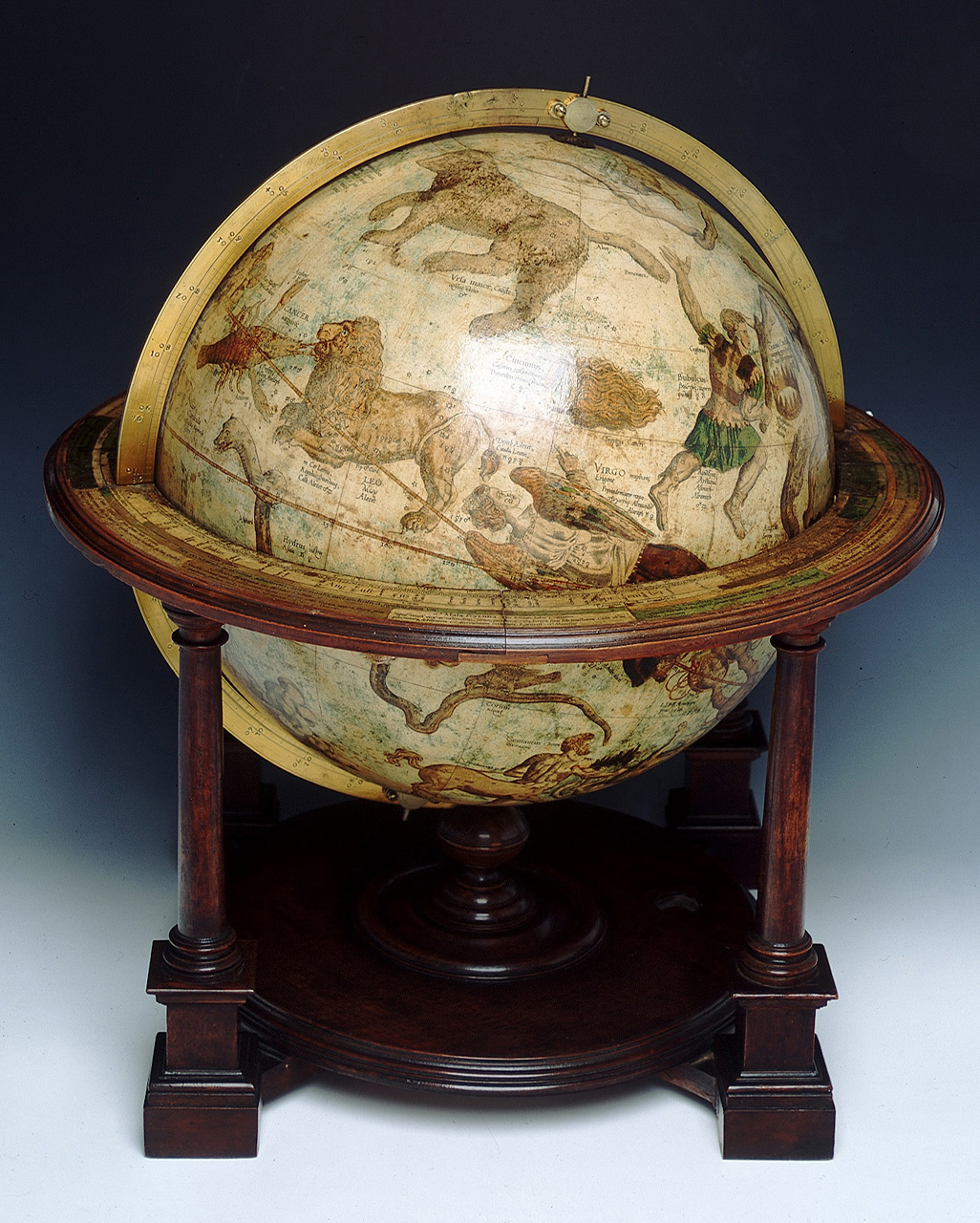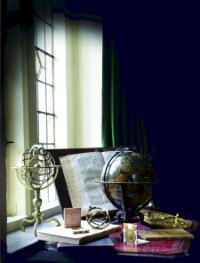 Type: globe
Type: globe
Inv. No. n/a
Source: Royal Museums Greenwich, GLB0096, GLB0097
The leading globe historian Elly Dekker describes these instruments as ‘the most important pair of globes made in the sixteenth century.’ They were the work of Gerard Mercator in Louvain; the terrestrial globe was first produced in 1541 and the celestial a decade later. Mercator was a skilled engraver and a major technical development from the earlier globe of Schöner is that here the paper ‘gores’ applied to the sphere were printed from a copper plate, not a wooden block. This – as well as their larger size – allowed a great deal more detail and much finer lettering. Gemma had introduced copper-plate engraving for his globes and Mercator had learnt the trade in Gemma’s Louvain workshop.
Another innovation by Gemma, which Mercator followed, was to include astronomical features on his terrestrial globe – the circle of the ecliptic and a number of stars – giving it a dual function and making it more properly speaking a ‘cosmographical’ globe. Original with Mercator, however, are ‘loxodromes’ or ‘rhumb lines’, representing the paths traced by following a constant compass bearing and therefore relevant to navigation. Mercator also introduced this design of stand, which remained the common way of mounting globes for several centuries.
On loan from Royal Museums Greenwich, GLB0096, GLB0097
Previous: Georg Joachim Rheticus, Narratio prima
Next: Gerard Mercator’s copy of Nicolaus Copernicus, De revolutionibus orbium coelestium

